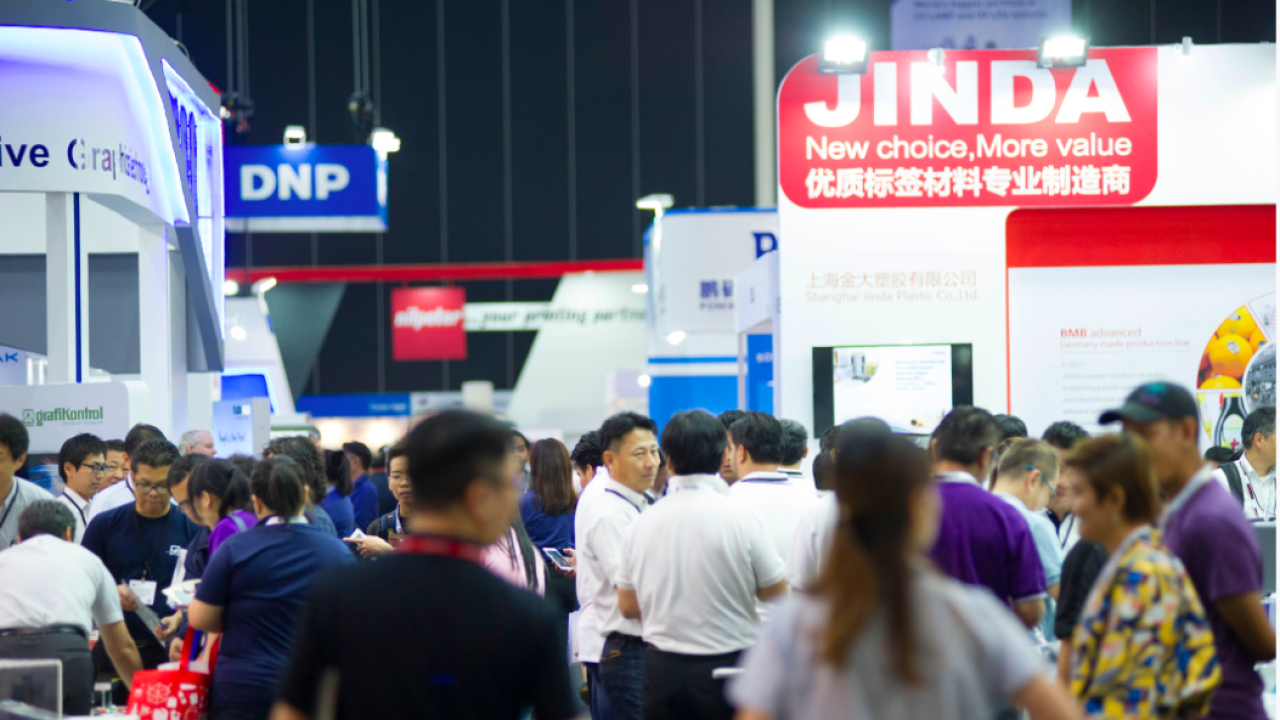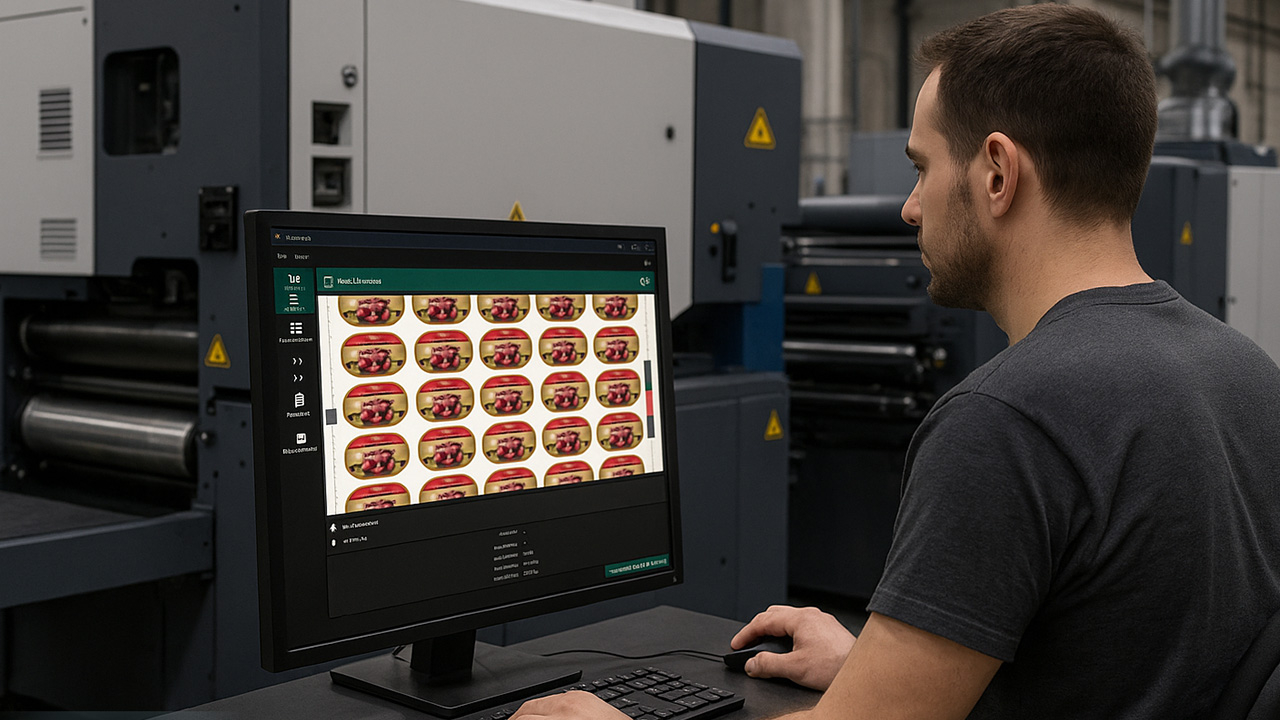Regional round-up: Southeast Asia

The strength of the local market was demonstrated at the inaugural Labelexpo Southeast Asia, held in May in Bangkok. With 7,934 attendees from 62 countries flocking to the three-day show, exhibitor rebookings for the next edition in 2020 stood at 42 percent at the end of the show – the highest following a Labelexpo event launch to date. The event attracted 174 of the global industry’s principal suppliers, who see the region as a booming market.
Suppliers spy opportunity
At the event, Jakob Landberg, Nilpeter’s sales and marketing director, described Thailand as ‘one of the five fastest-growing label markets in the world’. Eric Blankenstein, sales director at Nilpeter Asia-Pacific, said the country is an hub for the company: ‘We have our technology center here and it’s a great market for us to further expand into Southeast Asia.’ Nilpeter opened a new office in Indonesia last year and is looking at Vietnam next.
Omet’s ASEAN manager Dario Urbinati said: ‘Thailand is one of the hot spots in the label and packaging industry in Southeast Asia. The wider ASEAN region has one billion consumers with a double-digit growth rate in labels and packaging, so it is a significant part of our business strategy.’
Indicating technology trends, Sean Pullen, sales director Asia Pacific at Mark Andy, said that local printers are upgrading from letterpress and could go the digital or flexo route – or both. ‘Also it is very much a flexible packaging market in Thailand that includes pouches and sachets.’
Letterpress machine manufacturers such as Zhejiang Weigang and Zhongte see great demand for letterpress and offset technology in this market. Spring Xu, international sales manager at Zhejiang Weigang, said: ‘Similar to China, there are lots of short-run jobs in the Southeast Asian market, and local converters have traditionally used letterpress and offset machines to target this work. But we see a trend of companies moving into flexo technology.’
Brotech’s Ramon Lee said: ‘It is a good market that has a high concentration of digital, flexo and letterpress technologies. The labor cost, however, is increasing, because of which label printers are shifting to more automated machines. We see growth in Singapore, Malaysia and Thailand.’
HP Indigo’s Melvin Lew said: ‘The region is growing well with Thailand being a huge market, and we see growth potential in Indonesia.’ The company has several demonstration centers in Southeast Asia, including two each in Thailand and Indonesia, three in the Philippines, and one each in Singapore and Malaysia.
Armor’s Mark Day said: ‘The Southeast Asian market is very price-sensitive, but we bring additional value to ribbons with the inkanto product range. We are growing with the market and witnessing double digit growth year-on-year in volume consumption.’
Lintec has manufacturing bases in Thailand and Indonesia and sales/slitting centers in Singapore, Malaysia, Vietnam and the Philippines. ‘ASEAN is certainly a growing market for us,’ says Masaaki Yoshitake. ‘We see big growth for Lintec now in the food, toiletries and cosmetics markets.’
Univacco sees Indonesia as the fastest-developing market in Southeast Asia. Univacco is witnessing a 20 to 30 percent growth in the region, compared to the global growth of 15 percent. It has distributors in Vietnam, Indonesia, Thailand and the Philippines as well as an office in Malaysia.
RotoMetrics is expanding its production facility in Thailand owing to the growing market in Southeast Asia. Paul McKay, general manager, said: ‘While Thailand and Singapore are large mature markets, we see potential growth in the Philippines and Indonesia.
As volume in these markets will grow, small and medium size label printers will have to switch from flat-bed die-cutting to rotary die-cutting technology. We already see it happening in Indonesia. We see a growth of 20 to 25 percent in rotary dies in the region year-on-year.’
BST eltromat Southeast Asia’s managing director Oliver Finkeldey summed it up: ‘The market here is booming.’
Converter trends
At the event’s conference, a panel discussion of regional converters outlined some of the market’s key trends, such as the need to diversify from pressure-sensitive labels to other forms of labeling and package printing in order to maintain competitiveness.
Indonesia-based PT Interflex, for example, was founded in 2008 to produce shrink sleeves, and has now diversified into flexible packaging. Trisan Printing, based in Thailand, was originally a letterpress label converter and has adopted flexo and offset while also diversifying into folding carton production.
Each country in the region has different demands, so it is a challenge to track consumer profiles in each country and market products to them effectively. Multinational companies are moving into the region to cater to increasingly leaner supply chains.
Adrian Pratiwiharja of PT Interflex Sejahtera Perdana said: ‘We have big multi-national converter competitors in Indonesia, and that is a good thing. It is fair competition and makes us want to continuously improve. Certain brands in Indonesia still prefer buying from medium-sized local companies, where we can be more price competitive. They like the quick lead times from a small business.’
Brenton Barrett of Multi-Color Corporation (Asia-Pacific) commented: ‘Despite MCC being an international converting group, its ASEAN customers are looking for the company to be local. It is all about speed to market and being local. We can export to a market for perhaps 1-2 years before we have to put down bricks.’
Asian release liner market
Alexander Watson Associates (AWA) organized an event in Bangkok to discuss the Asian release liner market ahead of Labelexpo Southeast Asia’s debut show in May. Sharing research data, Corey M Reardon, president and CEO at AWA, said: ‘50.9 billion sqm of siliconized release liner was consumed in 2017 globally, of which 19.6 billion sqm – 39 percent – was consumed in Asia-Pacific.’
According to research by AWA, consumption of glassine/SCK paper and polyolefin coated paper in Asia-Pacific stands at 28 and 29 percent respectively. ‘We see a slight shift to glassine in this market but it is slower than expected,’ said Reardon. Global consumption of glassine stands at 36 percent and that of polyolefin coated paper is 17 percent.
Globally, 49 percent of release liner is used for the label segment and 13 percent for the tape segment. Following global trends, the Asian market has also been observed to use 48 percent of release liners for label applications, and 21 percent for the tape segment. In 2017, the global release liner market grew at just under five percent and the primary growth driver was the Asia-Pacific region, growing 6.4 percent. ‘It is, however, not a homogeneous market with different sub-regions growing at different rates,’ Reardon pointed out.
He further added that 62 billion sqm of label material is estimated to have been used worldwide in 2017, of which 44 percent was consumed in Asia-Pacific. Food and beverages have been identified as the fastest-growing segments in the region, withgrowth of 22 and 47 percent respectively. Pressure-sensitive was seen as the fastest-growing label technology in Asia-Pacific last year, at 6.9 percent, with increasing opportunities in the food and beverage segments. This is followed by growth in shrink sleeves at 5.5 percent and glue-applied at 5.2 percent.
Pressure-sensitive labeling represents 24 percent of the global primary product label market; glue-applied stands at 44 percent followed by shrink sleeves at 23 percent. In the Asian market, however, pressure-sensitive represents a larger share of 35 percent, followed by glue-applied labels at 33 percent and shrink sleeves at 27 percent.
One of the key growth trends in shrink sleeve labeling is the food and beverage segments, where competition with pressuresensitive labeling is increasing. ‘However, shrink sleeves are now growing at a deaccelerated rate. The other competing technology is flexible packaging, which is growing at a fast pace in the region. Track and trace in logistics and transport is also on the rise and not much competition is seen in this market segment. Shrink sleeves and wet-glue are not competing with pressure-sensitive in the variable information printing category. However, direct print is replacing pressure-sensitive labels in some cases, but it can’t include value-added features such as RFID, security and anti-counterfeiting that have increased demand in the pressure-sensitive segment,’ said Reardon.
Stay up to date
Subscribe to the free Label News newsletter and receive the latest content every week. We'll never share your email address.

